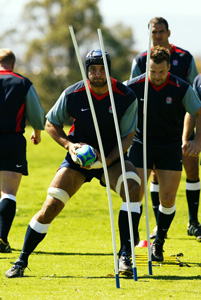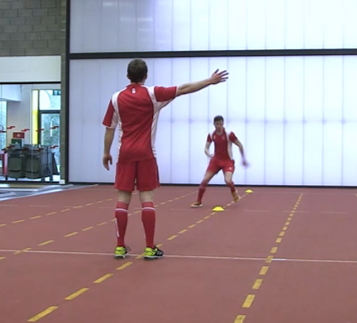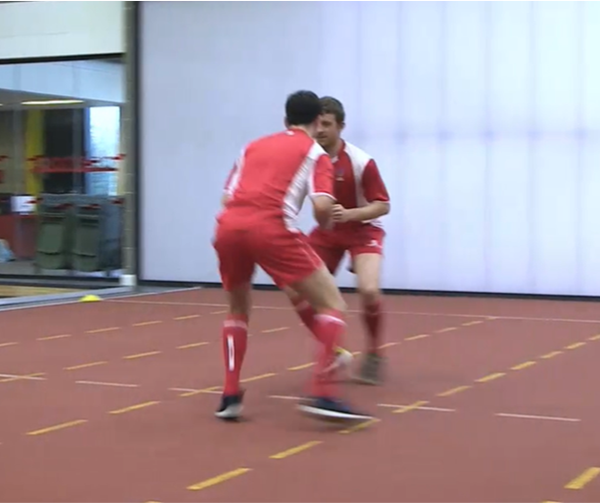Open and closed skills
When the elements of Gamespeed in rugby are considered, agility is a major component. When developing agility, it is important that the selected drills address the movement skills and capacities that are evident within the player’s positional requirements. Typically, the coach should begin with simple closed chain drills that develop basic movement pattern, but it is important to progress to open chain game specific drills that reflect the movement patterns in the game, thus, facilitating transfer to the sport. Open skills are random in nature and involve a movement in response to a stimulus. For example, rapidly changing direction in response to a bounce of a ball or an opponent side stepping. Closed skill movements e.g. cutting or side stepping around a series of cones in pre-determined manner are pre-planned in nature and do not require the previously mentioned reactive or anticipatory factors as there is no sport-relevant stimulus. Training closed chain drills is however still an important element of the training program. Pre-planned drills such as foot placement, posture, and adjustment of strides can improve overall movement patterns and teach players the technical component of changing direction efficiently. Open skills, on the other hand, are important for developing sport relevant agility (Sheppard and Young, 2011).
Figure 4. A pre-planned drill such as plant and cut is considered a "Closed" skill.

A critical aspect when considering an agility program, is that rugby is chaotic and unpredictable in nature. Movements in a game are triggered by the ever-evolving actions unfolding around a player such as movement of the opposition, a teammate, or the ball. It is therefore difficult to prepare players for the random nature of the sport. Coaches can however develop players’ movement patterns and their ability to make either an anticipatory or reactive response.
Figure 5. Reactive agility drills can be used to develop "Open" skills.


According to Bates and Jeffreys in 2015, open skill drills should follow closed skill drills. Incorporating elements such as a ball, teammates, and opposition into agility training can help players to maximise the transfer between their training and their game performance (Bate & Jeffreys, 2015). Thus, for overall performance, it is important to include both open and closed skill drills in the agility training program. Figure 3. shows how closed chain skills development forms the base for more unpredictable and random open skill development.
Figure 6. Movement development

When designing an agility program, whether using the Gamespeed concept or traditional speed and agility training, the first step in the process is to develop general and stable fundamental movement patterns. Following this, develop key movement pattern combinations and progress from closed to open skill drills. This may include typical cutting and side-shuffling drills to drills with perceptual triggers. Drills that include recognition and reaction training can range from simple to complex. A ball drop drill where the player must react to the ball’s movement and catch it before it bounces is an example of a simple reaction drill. Adding a decision-making component by including an agility drill along with a reaction to a coach or teammate makes the drill more complex. Finally, develop sport specific movements in game context by adding key skill requirements that are associated with the game. This can be achieved in the form of a simple evasion drill or small-sided games.